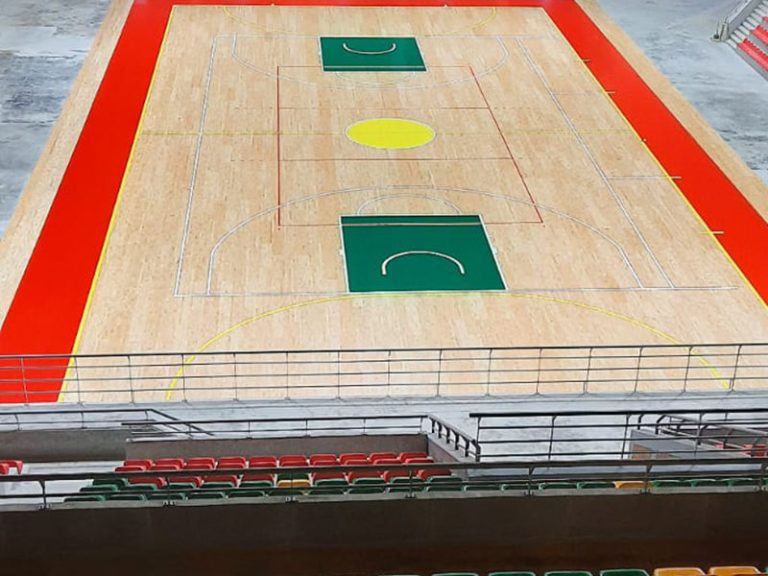Whether you’re building a professional sports arena, a school gym, or a community recreation center, choosing the right court flooring is a decision that affects athlete safety, performance, and facility longevity. The right surface enhances gameplay, reduces injury risk, and offers long-term value.
What Is Court Flooring?
Court flooring refers to the specially engineered surfaces used for indoor and outdoor sports courts. It provides proper traction, shock absorption, and bounce depending on the sport. Common venues include:
Basketball courts
Volleyball courts
Tennis courts
Badminton courts
Multi-sport facilities
Popular Types of Court Flooring
1. Hardwood Flooring (Maple & Birch)
Ideal for basketball and volleyball courts. Maple is the professional standard, offering excellent bounce and durability, while birch is used for cost-effective or removable floors.
Best for: Indoor basketball, volleyball
Features: High durability, great ball response
Note: Requires climate control and regular maintenance
2. Polyurethane (PU) Sports Flooring
Seamless, cushioned, and ideal for multi-use courts. It’s especially common in schools and fitness centers.
Best for: Multi-sport gyms, martial arts, aerobics
Features: Seamless surface, easy maintenance
3. PVC or Vinyl Sports Flooring
Multi-layered, flexible flooring with shock-absorbing foam underlayers. Offers good comfort and affordability.
Best for: School gyms, budget projects
Features: Good grip, customizable thickness
4. Rubber Flooring
Heavy-duty flooring used mainly in training zones and weight rooms, but sometimes installed in multi-sport spaces.
Best for: Weight rooms, indoor running tracks
Features: Noise absorption, durability
5. Modular Interlocking Tiles
Highly portable and used for events, temporary setups, and both indoor/outdoor courts.
Best for: Temporary courts, event venues
Features: Quick installation, customizable design
Key Factors When Choosing Court Flooring
Type of Sport: Each sport has unique requirements. Basketball needs bounce; tennis needs grip.
Indoor vs. Outdoor: Material choice depends heavily on the environment.
Budget: Long-term costs include maintenance, repairs, and replacements.
Usage Frequency: High-traffic areas need extra durability.
Installation & Maintenance: Consider setup time, professional installation needs, and cleaning routines.
Customization Options
Modern court flooring can be tailored to meet your branding and functional needs:
Game line markings for multiple sports
Logos and colors
Slip-resistance ratings
Removable or fixed installation systems
Where Court Flooring Is Commonly Used
Schools and universities
Community centers and YMCA facilities
Private sports complexes
Event arenas and sports exhibitions
Professional training centers
Final Thoughts
Choosing the right court flooring means balancing performance, safety, durability, and appearance. Whether you opt for solid hardwood, modular tiles, or PU systems, ensure it matches your court’s needs and user expectations.
If you’re looking for certified, high-quality sports floors—especially in basketball or volleyball court wood flooring—brands like NB Flooring offer custom solutions, including FIBA-approved removable maple and birch floor systems.
Let your court start with the right foundation.


